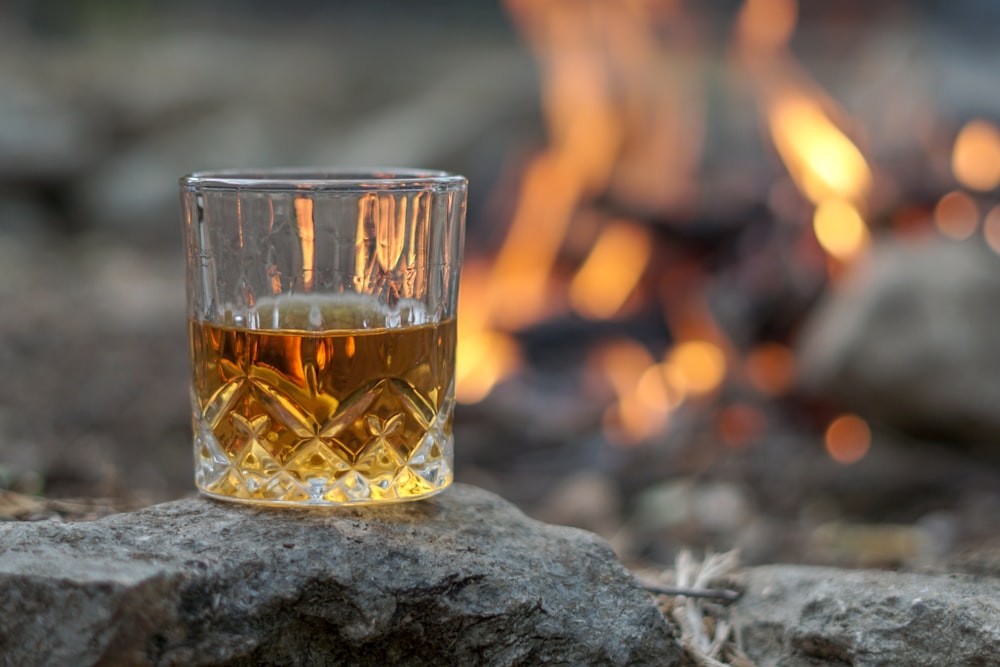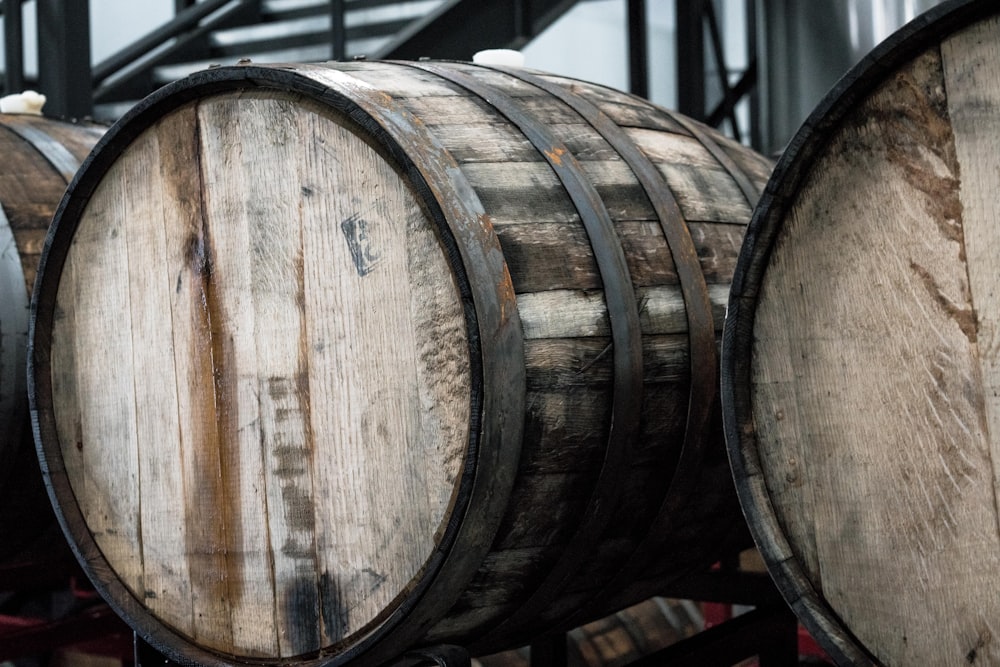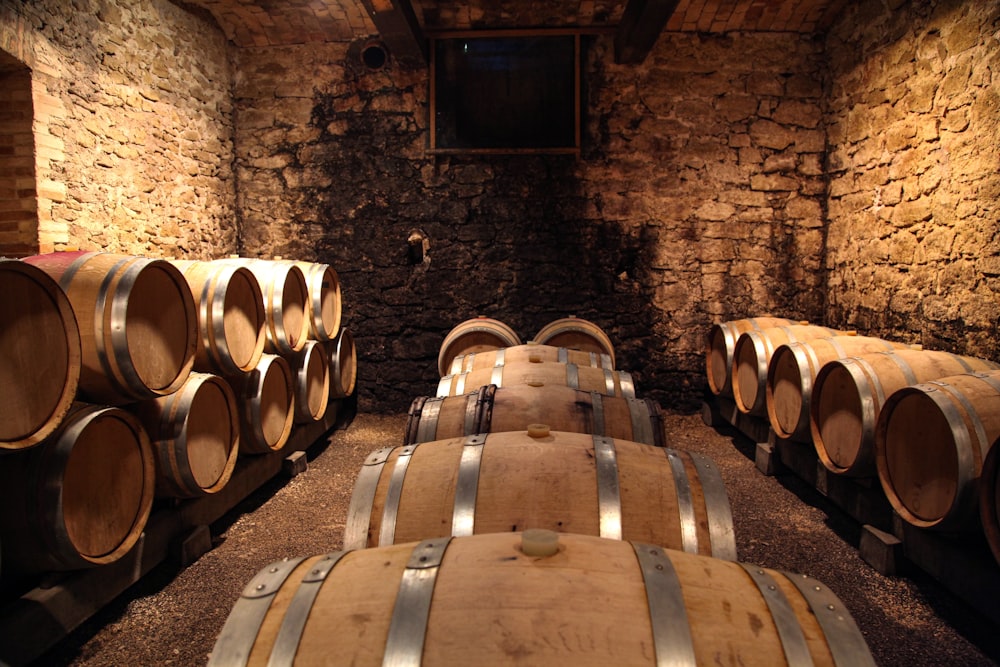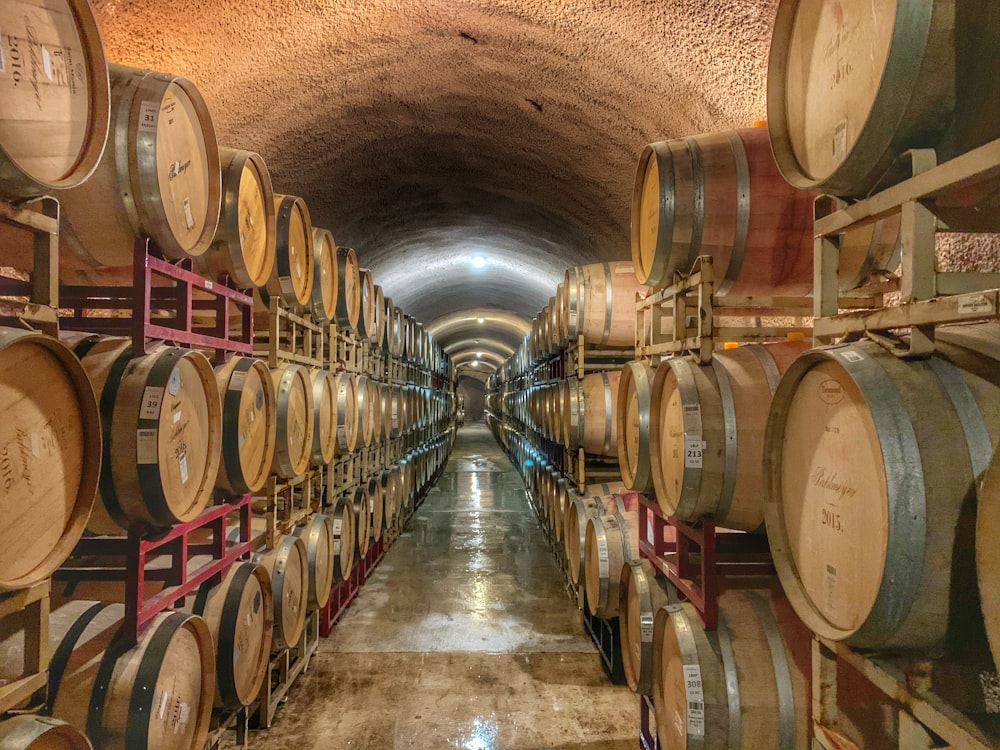Introduction
Did you know? Before whiskey became a widely enjoyed drink in homes, pubs, and clubs, it used to be used as a form of medicine. It was widely utilized as an internal anesthetic and an external antibiotic. Whiskey was also believed to have a calming effect on nerves and could be used to treat depression and anxiety. Today, whiskey is still used by some people as a remedy for sore throats and colds.
Origin of Whiskey
The origin of whiskey, including its creation and storage, could be traced even further back than the 1100s when it was brought into parts of Ireland and Scotland by monks who also utilized a distinct distilling process to come about whiskey. Over the years, it has undergone different processes and methods of distilling and preservation to birth the variations of whiskey as we know it today. Whiskey has become a popular drink worldwide, with different countries producing their own unique versions. The variations in taste and quality depend on many factors, such as the type of grain used, the aging process, and the distillation techniques employed.
There are different types of whiskey, which are differentiated based on their means of production and preservation. Irish and Scotch whisky is prevalently loved and favored all over the world. However, some parts of the United States, Canada, and Japan also have their own whiskey, making it one of the most popular liquors globally.
What is Whiskey?

Whiskey is a dark-colored distilled spirit produced from a variety of wheat grains. With an approximate amount of 70 calories per shot, whiskey leaves a taste of vanilla and caramel flavors, vanilla, and oak in the mouth. The meaning of “whiskey” can be traced to “water of life” from the Gaelic word uisge beatha thanks to its medicinal properties.
In ancient times, malt whiskey was obtained by distilling barley beer, which was an activity restricted to monasteries as far back as the 15th century. Whiskey has different taste characteristics based on the preparation as well as the container in which it is stored.
Whiskey Maturation: How Did Whiskey Barrels Come to Be?
While the ingredients used and methods adopted are very important in determining the type and quality of whiskey, there is yet another very important stage of the production process. This stage is the aging process, which can take several years and greatly affects the taste and color of the whiskey. Additionally, the type of barrel used for aging, such as oak or sherry casks, can also impact the final flavor profile.
The maturation process did a whole lot more for whiskey than just providing a place to let it sit; it changed the very characteristics and nature of the whiskey drink.
Are Barrels more than Just Storage?
Whiskey was not always a liquor with a maturation process. Initially, whiskey used to be drunk just as it is in its distilled form after processing. This means that whiskey from past times used to contain a very high alcoholic content, making it very concentrated with a highly refined taste. Since whiskey did not undergo a maturation process, it had a hard taste and burning aroma.
However, with the introduction of modern distillation techniques and maturation processes, whiskey has become smoother and more palatable. Nowadays, whiskey is aged in oak barrels for several years to achieve a complex flavor profile and a smooth finish. It was only after some time that people started to realize the benefits of aging whiskey in barrels, which led to the creation of different types of whiskey with unique flavors and characteristics. Nowadays, the maturation and bottling process is an essential part of producing high-quality whiskey.
Whiskey Oak Barrels
A whole barrel storage became a thing when there was a need to transport them from place to place. These wooden containers were utilized as a medium for the storage and transportation of liquor only. However, during the storage and transportation, a new development occurred in the characteristic of whiskey. The wooden containers or hogshead casks, also known as barrels, imparted unique flavors and aromas to the whiskey as it aged.
This process is known as barrel aging and is now an essential part of whiskey production. The time it spent in these barrels while moving between locations kicked off the maturation process for the liquor. These maturation processes changed the contents of the barrel of whiskey from a sharp, burning aroma with a hard taste to a soft, smooth liquor with much more subtle strength and aroma.
Why are Barrels Used to Store Whiskey?
The type of barrel used for maturation also played a significant role in the final taste and aroma of the whiskey. The barrel strength, wood and char level of the barrel imparted unique flavors and colors to the liquor. This change gave rise to a more suitable and better-tasting liquor, which began the culture of storing whiskey in barrels until it achieved that subtle taste and suitable strength. Today, barrel aging is still an essential part of the bottling process in producing high-quality whiskey.
How Is a Barrel of Whiskey Made?
The entire barrel of whiskey is made selectively from oak wood due to its distinct structure. On one hand, it prevents the liquid within from leaking out. On the other hand, it allows just enough oxidation by allowing the contact of the liquid with just enough air to aid the maturation process. This is particularly important in the production of certain types of alcoholic beverages, such as wine and whiskey, where controlled oxidation is necessary for the desired flavor and aroma to develop.
The use of barrels also adds complexity and depth to the final product. The oak used in the making of a standard barrel is mainly of two types: American and European oak. Sometimes, the whiskey is changed into another barrel and kept for another period of time.
After caramel flavors created in the production process become a part of the drink, it is time to finish scotch whisky with a good aging process. Different types of barrels, such as those previously used for wine or sherry, can also be used for finishing to create unique flavor profiles.
How Many Bottles Are in a Barrel of Whiskey?
The first thing to keep in mind here is that there is no definite answer to this question. It varies widely depending on the type of whiskey barrel, the size of the bottles, and the barrel, also known as a cask, in which it is kept. Factors such as the age of the whiskey, the climate it is stored in, and the storage conditions play a significant role in determining how long a whiskey should be aged before it is bottled and sold.
One other important factor that causes the variation in the number of bottles you can get from a barrel is the evaporation rate. Some amount of whiskey, though small, will evaporate daily. However, when compared to a yearly rate, especially with more than one barrel involved, evaporation hits a new high.
This phenomenon is known in the bourbon industry as the “angel’s share” and can result in a loss of up to 10% of the whiskey’s volume per year. This can be both a financial and a quality concern for whiskey producers. On average, the barrel evaporation rate is around 2% annually. This means that over time, a full barrel yields a significant amount of whiskey that can be lost due to evaporation. Distilleries often account for this loss in their production and pricing strategies.
How many bottles are in one barrel?
A single barrel also come in different sizes with different holding capacities. So how many bottles are in a typical barrel of whiskey? The typical whiskey barrel has an average holding capacity of 53 gallons. However, smaller barrels are becoming increasingly popular among distillers as they allow for faster aging and experimentation with different flavors.
On the other hand, larger barrels are preferred by some distillers for their slower aging process and ability to produce a smoother taste. Asides from the size of how many bottles you can get from your very own barrel of whiskey, when it comes to a typical barrel of whiskey, the size of the bottle used would help determine more closely just how many bottles in a typical barrel of whiskey there will be in that typical barrel of whiskey. The size of the bottle used for the whiskey can also affect its price, as smaller bottles tend to be more expensive per unit volume.
How Many Bottles In A Barrel of Whiskey (Bourbon, 750 ml)?

Most bottle sizes for bourbon whiskey come in a standard capacity of 750 milliliters. When matched with a conventional 53-gallon whiskey hogshead cask, a range of 200 to 250 bottles of whiskey can be obtained from the whiskey barrel. However, some distilleries offer limited edition or specialty bottles in different sizes, such as 375 milliliters or 1 liter, which can affect the number of bottles produced from a single barrel.
Additionally, other factors, such as the angel’s share and aging process can also impact the final yield of whiskey from a barrel. A smaller-than-average barrel, will in turn produce fewer bottles, and a smaller bottle size will give you more bottles when matched with a big or standard-sized barrel.
How Many Bottles of Jim Beam Bourbon Are In A Barrel?
Jim Beam bourbon is a type of whiskey that can also be purchased in a hogshead cask by bourbon enthusiasts. They can be purchased by retailers in only a select few places. So how many bottles can we get from a Jim Beam Bourbon barrel? Jim Beam bourbon barrels come with about 200 bottles of whiskey, each with the standard 750-milliliter capacity. If the bourbon samples are just newly distilled, the evaporation rate can be as high as 4–5%, which places more demand on aged whiskey in a barrel to reduce loss due to evaporation and increase bottle numbers.
To keep bourbon whiskey in a barrel from evaporating, bartenders and other experts with spirits tend to wrap the bourbon barrel top in cling film to curb air bubbles that lead to the escape of “angel’s share” from the bourbon barrels top. Fewer leakages and reduced evaporation rates mean many bottles per barrel, which is definitely good for business.
How Many Bottles of Bourbon Are in a Barrel?

The most important variables that must always be observed when it comes to how many bottles in a barrel, the diameter of the bottle, and the glass jar is critical.
Despite the 500-mL bottle size, the holding capacity of how many bottles in a barrel of whiskey can still vary depending on the build and design of the bottles. The little differences of a few milliliters might seem insignificant in how the bottle design affects how many bottles are in a barrel of whiskey. However, when you load a ton of bottles on a commercial scale, those little differences come together to make quite a difference.
Here is a simple math strategy to get around this. Assuming you measure the typical, American standard barrel, and the typical, American standard barrels and size bottle, the equation will be divided by the volume of total liquid in the American standard barrel and the bottle.
How many fifths are in a barrel of whiskey?

Again, whiskey is a spirit, and anyone well acquainted with this liquor will know that it is commonly measured in fifths. A fifth is a common measurement method for distilled alcohol like whiskey.
A simple way to get around this is to remember that five-fifths make a gallon. So to get a rough estimate of the number of fifths in a barrel, it comes down to figuring out how many gallons make up the holding capacity for that barrel and then dividing that number by five.
How Many Bottles in a Barrel of Whiskey: Bottle sizes and barrel sizes
There are different standards for measurement when it comes to bottle sizes and barrel sizes for whiskey. These sizes range from the portable 50-ml bottles common on airplanes and starter packs to the Texas Mickey, with a whopping 3-liter capacity. There is also the Italian-favored “half a pint,” which measures up to 2 drinks worth of fluid ounces of whiskey.
Different Bottle Sizes in Different Places
The American standard for measurement, for example, places the standard barrel size at 190 to 200 liters. The standard bottles are also sized at 70 and 75 centiliters. With this standard, you can get as many as 275 to 285 70-centiliter bottles of whiskey and 255 to 275 75-centiliter bottles of whiskey from a standard American barrel. The European standard bottle size for whiskey sits somewhere at 350ml measuring up to a pint based on their metric system.
There are also half-liter size glass bottles of 500 mL and standard barrels of 700 mL, which are common to the EU alone and not the United States. These bottles and standard barrels are of different sizes commercially due to consumption regulations and government guidelines.
Is it possible for you to buy a full barrel of whiskey?

Here is one for the whiskey lovers out there. Yes, it is possible to purchase a barrel of whiskey as long as you know the ropes. If your consumption rate is high or you happen to serve a lot of whiskeys, owning a cask of your own is definitely a tasty idea. Until recently, purchasing a full barrel of whiskey was almost impossible.
Only bars, pubs, and some selected establishments in the area were allowed to buy a whole mature scotch whisky or original single-barrel bourbon still. However, it is now a ton easier to get a whiskey or bourbon barrel for yourself. There are even brokers who engage in the purchase of barrels for establishments and individuals in accordance with state law and government policies.
Is buying your very own barrel worth it?
Whiskey barrel purchases can be a good investment when done properly. If you are purchasing whiskey barrels as an establishment in the hopes of seeing returns, it might take a little while to see the turnover you want. Most measurement standards have the number of alcoholic beverages in the barrels at about 55 gallons (210 to 210 grams) in the bottling process.
A standard one barrel produces 266 75-cl bottles in a single batch. For people who love good whiskey, you can order one for yourself. However, it is important to understand how many bottles in a barrel of whiskey, what it takes to purchase a barrel of whiskey, where to purchase one, under what conditions, how to care for the whole barrel of whiskey, and how to get your whiskey.
Does whiskey go bad?
Whiskey can go bad. As a matter of fact, it can pretty much expire in your hands. The time on your whiskey starts running after it has been opened, especially for finished scotch whisky packaged in bottles.
However, it all comes down to the amount left after the first opening. According to scientific research, a bottle of whiskey that has already been opened can last up to two years if the bottle is still at least halfway full. If anything less, it would mean the whiskey will go bad and expire in less than six months.
After opening the bottle, the longer the remains of premium bourbon stay, the more different it tastes every time as the characteristics of the scotch whiskey, especially the taste, and aroma, are depleting slowly but surely over time.
